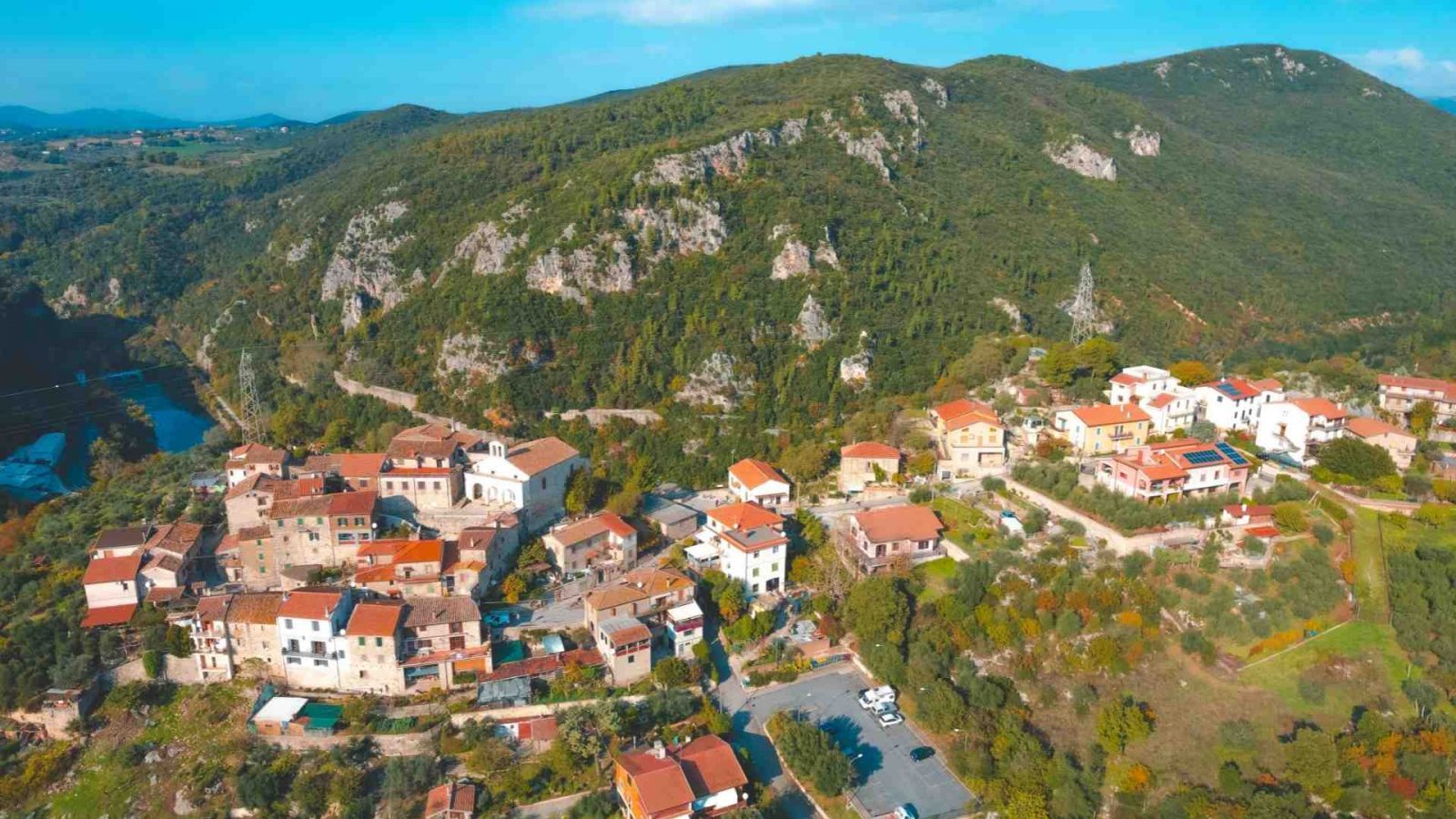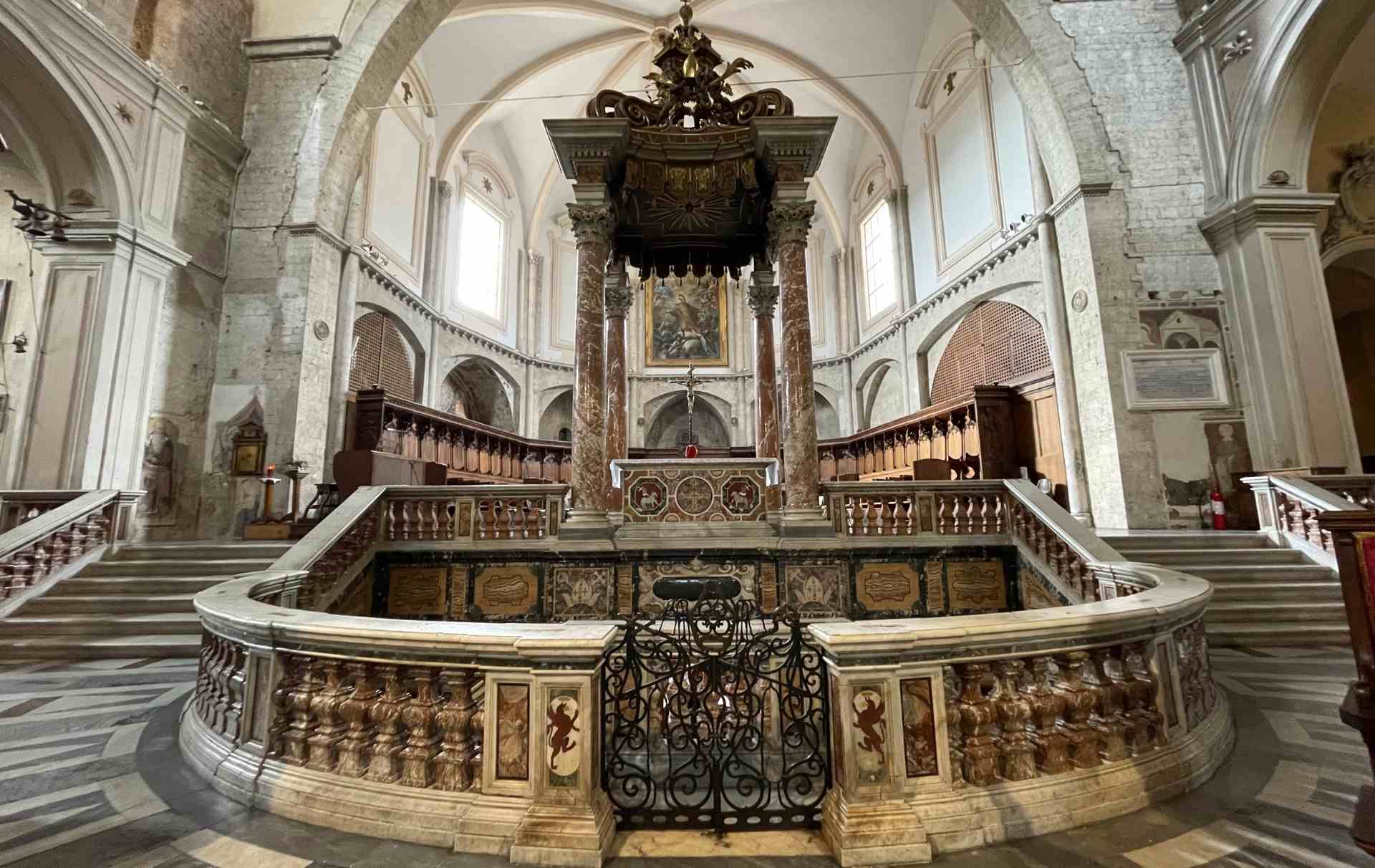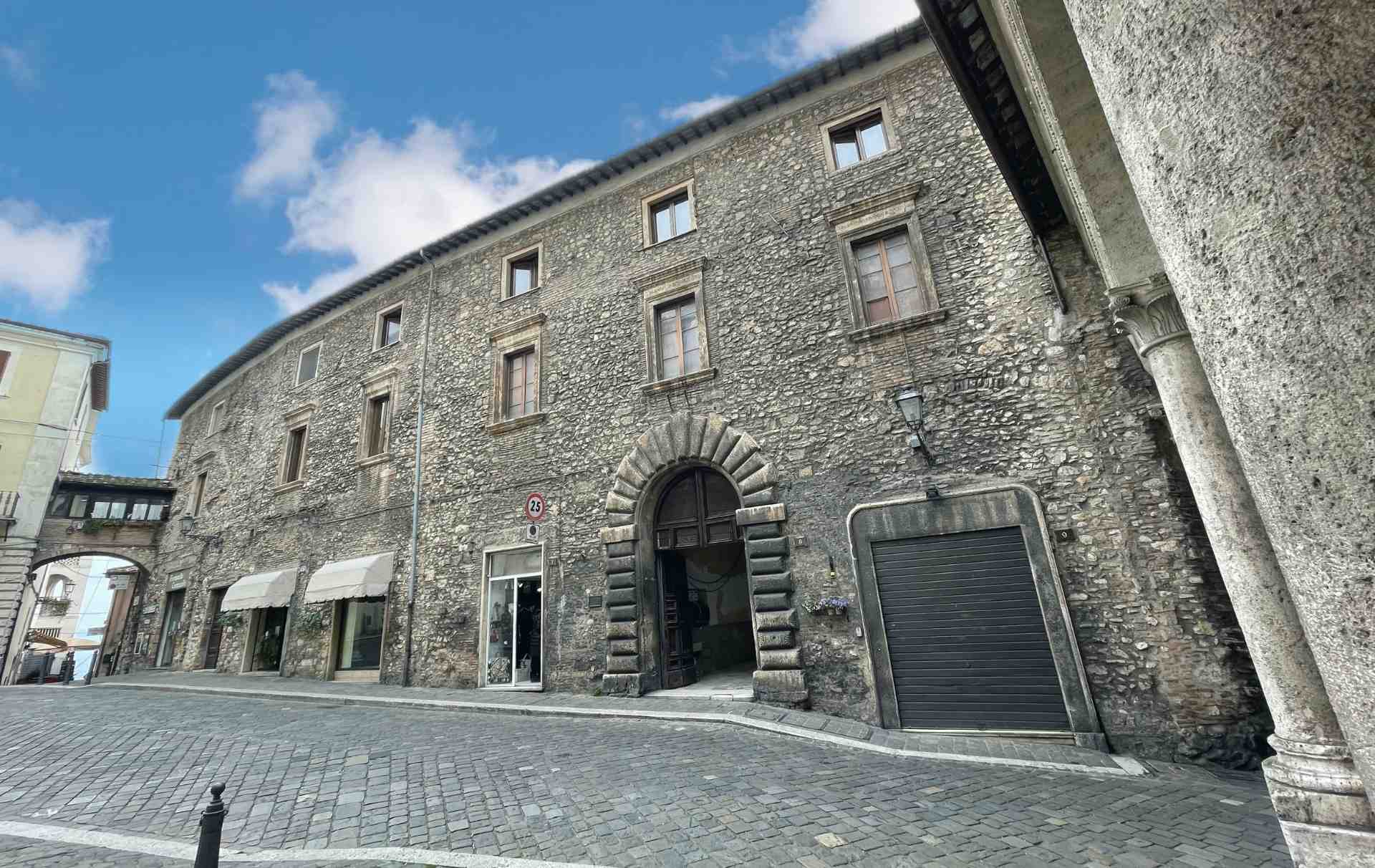The old castle of Taizzano is located along the Via Tiberina, just above the village of Stifone and the emerald course of the Nera river.
The former castle of Taizzano.
Since before the Romans and also after that, the territory of Taizzano must have been useful to Nequinum (Narni before the Roman age) as point of watch.
Under that, near Stifone was built the river port mentioned by Tacitus and the shipyard which was used before to the people of Umbria. Around, in the territory existed different roman residences and one of these was built near the Abbey of Sant’Angelo in Massa.
We don’t know exactly when the castle was built, of which today is preserved really little: the first attestation, dating in the 12th century, mention Taizzano among the castles whose revenues are collected by the diocese of Narni.
After was connected to the Cesi family, for the bishop Romolo, in the second half of the 1500 elevated as his residence, restoring the Abbey of Sant’Angelo in Massa and enriched the parish church so much that after was frequented by Federico Cesi, founder of the Accademia dei Lincei (=Academy of the Lynxes).

What to see in Taizzano and in its territory.
The Church of the Saints Maria Annunziata and Silvestro, which dates to the first half of 1500, is located on the highest point of the hill.
In its territory there is the important Abbey of Sant’Angelo in Massa and not so far, in the Visciano area, it is worthed to visit the splendid Church of Santa Pudenziana.
It is part of the Taizzano parish, even, the Church of San Martino placed in an isolated position on a hill on the south side of the village.
Under the village there are the Gole del Nera and, in particular, the village of Stifone, two suggestive places to visit all year.
Taizzano
Taizzano – 05035, Narni
The village can be visited by foot.
The advice is to park near the access to the historic center, at the Belvedere in Via degli Schioppi.
Discover Narni.
Discover with us the interesting places nearby.
Or discover the points of interest of Narni and of its territory:

The Altar, the Confession and the Crypt
Characteristic and unique is the architectonic baroque complex, made from the second half of the XVII century , which includes the Major Altar, the Confession

Bishop’s Palace
Facing Piazza Garibaldi, with the entrance to Piazza Cavour, the Palazzo Vescovile (Bishop’s palace) is one of the most impressive buildings of the old town

Piazza Galeotto Marzio
Placed at the end of Via Mazzini and enriched by beautiful palaces which faced it, Piazza Galeotto owes its name to the big humanist from


